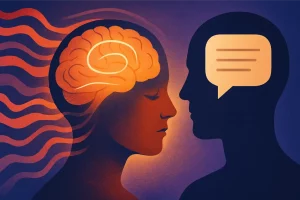Abstract
Aims: Ayahuasca is a traditional South American psychoactive beverage used in Amazonian shamanism, and in the religious ceremonies of Brazilian-based syncretic religious groups with followers in the US and several European countries. This tea contains measurable amounts of the psychotropic indole N,N-dimethyltryptamine (DMT), and β-carboline alkaloids with MAO-inhibiting properties. In a previous report we described a profile of stimulant and psychedelic effects for ayahuasca as measured by subjective report self-assessment instruments. In the present study the cerebral bioavailability and time-course of effects of ayahuasca were assessed in humans by means of topographic quantitative-electroencephalography (q-EEG), a noninvasive method measuring drug-induced variations in brain electrical activity.
Methods: Two doses (one low and one high) of encapsulated freeze-dried ayahuasca, equivalent to 0.6 and 0.85 mg DMT kg−1 body weight, were administered to 18 healthy volunteers with previous experience in psychedelic drug use in a double-blind crossover placebo-controlled clinical trial. Nineteen-lead recordings were undertaken from baseline to 8 h after administration. Subjective effects were measured by means of the Hallucinogen Rating Scale (HRS).
Results: Ayahuasca induced a pattern of psychoactive effects which resulted in significant dose-dependent increases in all subscales of the HRS, and in significant and dose-dependent modifications of brain electrical activity. Absolute power decreased in all frequency bands, most prominently in the theta band. Mean absolute power decreases (95% CI) at a representative lead (P3) 90 min after the high dose were −20.20±15.23 µV2 and −2.70±2.21 µV2 for total power and theta power, respectively. Relative power decreased in the delta (−1.20±1.31% after 120 min at P3) and theta (−3.30±2.59% after 120 min at P3) bands, and increased in the beta band, most prominently in the faster beta-3 (1.00±0.88% after 90 min at P3) and beta-4 (0.30±0.24% after 90 min at P3) subbands. Finally, an increase was also seen for the centroid of the total activity and its deviation. EEG modifications began as early as 15–30 min, reached a peak between 45 and 120 min and decreased thereafter to return to baseline levels at 4–6 h after administration.
Conclusions: The central effects of ayahuasca could be objectively measured by means of q-EEG, showing a time pattern which closely paralleled that of previously reported subjective effects. The modifications seen for the individual q-EEG variables were in line with those previously described for other serotonergic psychedelics and share some features with the profile of effects shown by pro-serotonergic and pro-dopaminergic drugs. The q-EEG profile supports the role of 5-HT2 and dopamine D2-receptor agonism in mediating the effects of ayahuasca on the central nervous system.
Riba, J., Anderer, P., Morte, A., Urbano, G., Jané, F., Saletu, B., & Barbanoj, M. J. (2002). Topographic pharmaco‐EEG mapping of the effects of the South American psychoactive beverage ayahuasca in healthy volunteers. British journal of clinical pharmacology, 53(6), 613-628. 10.1046/j.1365-2125.2002.01609.x
Link to full text













